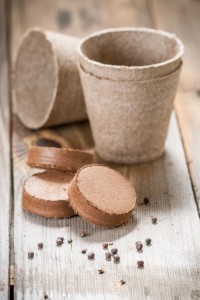Start Your Garden With Seeds and Nameplates for Plants and be Ready to Grow Your Own Food
 Maybe you’ve heard the phrase Victory Garden or heard someone referred to as a Victory Gardener. Did you ever wonder the origin of the term? Victory gardening has changed a bit over the years. What started out as a necessity of war has now become a title of expertise. All you need are a few seeds, some nameplates for plants and a couple of garden tools and you’ll be ready to earn the badge of Victory gardener for yourself.
Maybe you’ve heard the phrase Victory Garden or heard someone referred to as a Victory Gardener. Did you ever wonder the origin of the term? Victory gardening has changed a bit over the years. What started out as a necessity of war has now become a title of expertise. All you need are a few seeds, some nameplates for plants and a couple of garden tools and you’ll be ready to earn the badge of Victory gardener for yourself.
The History of the Victory Garden
The term Victory Garden dates back to the days of World Wars I and II. With the whole world in armed conflict it was hard to transport fresh food across great distances. Instead, governments encouraged citizens to meet their own produce needs by growing food right at home. This meant less strain on mass transit and meant there was more food available at low prices to feed hungry soldiers. Growing food at home was one way for all citizens to help achieve ultimate victory in the war.
Victory gardening today is not about winning a war, but it is still a matter of self-reliance and good stewardship of the earth and your own health. Victory gardening is about being wise. People who grow and eat local do themselves and the earth a favor. So here is a primer on becoming a victory gardener in your corner of the world.
1. Become Informed
You need to be intentional about what you plant and when. Not every part of the country has the same soil or the same climate. This means that some produce will grow better in certain regions than in others. Become informed about your local soil, climate information and what produce is most likely to thrive where you live.
2. Become Prepared
Now is not the time to be planting in the ground in most areas of the country, but it is a good time to clear the area where you hope to plant next spring. Get rid of weeds now. Mark out your garden plot so you know how many plants you’ll need to nurture through the winter.
3. Become a Nursery
You can use winter to grow plants from seed to seedlings indoors. Get some quality nameplates for plants so that your seedlings are clearly identified as they grow. By nurturing seedlings through the dark days of winter, you’ll have a head start come next spring when the ground warms and softens once again.
4. Become a Composter
Composting is smart for everyone. You can buy a compost bin or you can construct your own compost area in the yard. Non-protein food waste will provide rich nutrition for your soil and make your garden plants grow lush and delicious.
It doesn’t take a lot to become a victory gardener. This winter you’ll just need some soil and nameplates for plants. A pitchfork or shovel to stir your compost pile is an important tool. Next spring you’ll need a shovel to keep the soil well-tilled. Apart from a hose, that’s just about all you’ll need. Check with your local nursery for seeds to grow and check out Kincaid Plant Markers to get your nameplates. Next spring, you’ll be excited to see how very self-reliant and healthy you can be. Victory!

Preparing for Next Spring’s Garden: Create Nameplates for Plants | Kincaid Plant Markers
[…] now and reap the benefits next year. This fall you can prepare your soil, plan your garden and create nameplates for plants to get ready for next […]